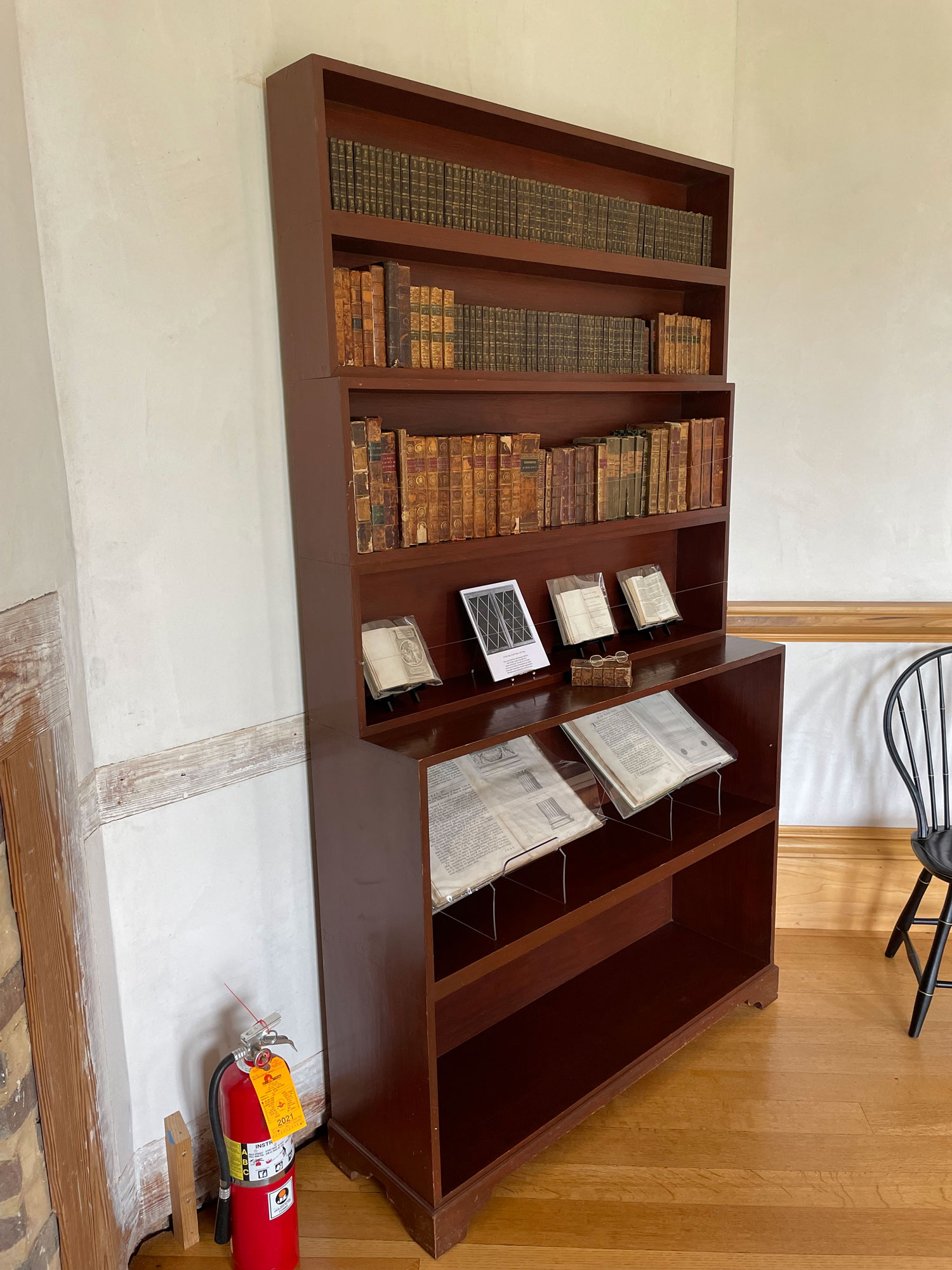
You are probably familiar with the reproduction bookcases at Monticello, a portable shelving system designed by Thomas Jefferson for his personal library. The individual boxes could be easily taken apart and temporary fronts were nailed on to protect the books during transport.
And Jefferson did just that when he sold his library to Congress in 1815.

I don’t know what happened to the originals (if anyone out there does, please holler). But there are nice reproductions at Monticello. I’ve built several versions of the bookcases through the years. Once for the library here and many other times for customers. They are a lot of work, but they’re fun (if you like cutting dovetails). Free plans are available here.
This week Mark Firley sent me some photos of another reproduction at Jefferson’s Poplar Forest, which was his retreat from Monticello. These are painted a beautiful red, but most of all the details are similar to the Monticello bookcases.
— Christopher Schwarz


So, dovetailed cases, but fronts were nailed on? I’d be tempted to build as ‘boarded’ and nailed boxes. If contemplating frequent moving, how about the top of the box narrower and with a plowed groove ends and bottom to receive a slide in panel raised or rabbeted front. All said, I’d be for poplar and milk paint.
LAP,For strength, when cutting dovetails on long /wide lengths does it matter if you use 10 dovetails, 1:6 on use 4 or 5 dovetails of a different 1:? ? Ralph
Hi Ralph,
Dovetails are like nuclear bombs. Will you destroy Cincinnati with five warheads? Or would 10 be better?
Once you get to three tails per 12″, you are fine. More than that is for aesthetics. Or to show off.
So does that mean a 6″ wide carcase only needs 1.499987 tails?
On a more serious note, I still think the form of these bookcases is one of most aesthetically pleasing I’ve ever seen. I’d love to see a simpler dado construction version side by side with the dovetailed one and see how it fares. I can’t decide how critical the “double thick shelves” are to the beauty of the overall form.
thats awesome, my wife and kids got to see Monticello when they did an East Coast trip in school. they loved it! not gonna lie I am still pretty jealous and hope to see it one day.
Jefferson’s may be prettier than many, but stacked boxes as bookcases were quite common in early America. Some of the historic houses here in Boston have them, and the tour guides point out that one of their advantages was making the library easier to rescue in case of a house fire.
This is also, of course, the forerunner of other modular bookcase designs including the barrister’s bookcase, which differs most substantially in being designed so the stacked layers interlock for increased stability (and reduced material cost) and in having lift-front doors designed into each module.
(I’ve spent a decade dithering about whether my formal library should have Jefferson-style, barrister-style, or built-in bookcases. Any of these would be period/theme appropriate. Some version of modular is almost certain, for ease of construction and installation… Though I’m probably going to wind up with some units that only appear modular, since I’ve promised myself at least one hidden door.)
I’m also admiring that wood-bedded lathe in the background of the last photo..
That’s a Conover from the 1980s. On long-term loan from a friend in Indianapolis. It’s currently living in the machine room. Love it.
Is there anything other than gravity and friction preventing the boxes from shifting?